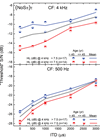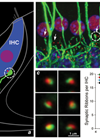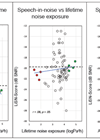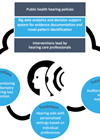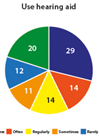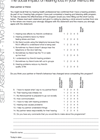Audiology features
Otoacoustic emissions in the diagnostic test battery for hearing loss
So, they are great for screening, but how can otoacoustic emissions be integrated into the diagnostic test battery? Beth Prieve examines the role of diagnostic OAEs by asking three simple questions. Audiologists and otolaryngologists are familiar with otoacoustic emissions (OAEs)...
Canine hearing testing and the role of otoacoustic emission tests
Otoacoustic emissions testing is an accepted method of hearing testing in humans, but have you ever considered the situation in dogs? This article discusses deafness and hearing testing in dogs and the current role of OAE testing in this species....
Hidden hearing loss in humans
Awareness of cochlear synaptopathy (‘hidden hearing loss’) is growing. Chris Plack gives us an introduction to the condition, defining it and reviewing recent research in humans and animals with respect to noise exposure. The main cause of hearing loss is...
A binaural detection task that reveals deficits in listeners having ‘slight’ or ‘hidden’ hearing loss
The association of degraded binaural processing in adults with clinically defined ‘slight’ or ‘hidden’ high frequency hearing loss is of great interest to clinicians if it can be measured. Leslie R Bernstein and Constantine Trahiotis share their findings in measurements...
What’s hidden in hidden hearing loss?
In order to truly understand the many key aspects of acquired sensorineural hearing loss, the role of cochlear synaptopathy or ‘hidden hearing loss’ must be considered. Dan Guo and Sharon Kujawa review and summarise what we know to date, including...
Hidden hearing loss in humans: cochlear synaptopathy is superseded by cognitive effects when listening to speech in noise
Elizabeth Beach presents an overview of the recent research being undertaken at the National Acoustic Laboratories on speech in noise and its relationship to cochlear synaptopathy. Our team at the National Acoustic Laboratories (NAL) has been investigating hidden hearing loss...
EVOTION: Big data supporting public health policies for hearing loss
Big Data? Biosensors, smart hearing aids and smartphones? The EVOTION Project has it all and more! What will this project tell us about the future of hearing management? Doris-Eva Bamiou, Giorgos Dritsakis and Louisa Murdin, members of the EVOTION team,...
Developing outcome measures for research
There are challenges in developing outcomes measures; Professor Hall presents five top pointers for making rapid progress in developing outcome measures for research purposes. Anyone who has worked clinically with hearing loss will appreciate that every patient’s experience is personal....
Hearing aid outcomes in older adults: what and when to measure
What matters to older adults when purchasing a hearing aid? Larry Humes explores the domains that should be measured for this key group. This article identifies key domains of hearing aid outcome in older adults. Increasingly, third-party payers and private-pay...
The basis of the bargain: outcomes not inputs
There are international drivers focusing our attention on measuring outcomes; Anthony Hogan looks at the data to see how we are currently measuring up. Introduction A global paradigm change is impacting on the provision of disability services. At its heart,...
Measuring client-centred outcomes in audiology: towards a parsimonious solution
From an international driver to the client-centred care model; in this article Anthony Hogan explores outcome measures for individual goal setting and measuring those outcomes. Introduction When people present for hearing help, they are typically looking for solutions to the...
Measuring audiological outcomes in the paediatric setting
In this article Marlene Bagatto argues that a range of outcome measures and instruments need to be implemented when working with children and families. She demonstartes how these support both clinicians and families. The primary goal of early hearing detection...





